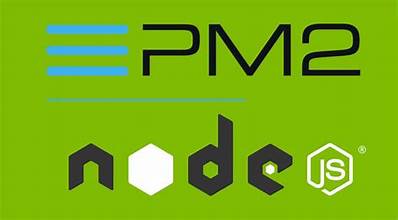Skip to content
Express.js
- Installation of Express.js
- Directory structure of an Express.js application
- Creation of a server
- Routing & Middleware functions
- Error handling
- server side Logging
- …
- Server side modules: HTTP, HTTPS, URL, SSL/TLS, Cluster, DNS, Process & child process, REPL, Zlib
- Load balancing in association with nginx
Node.js – the foundation (Concepts and architecture only)
- Node.js, V8 & Server side development
- Blocking vs. Non-Blocking
- Event-driven Programming
- Event Loop & the single threaded demultiplexer
- npm as a package manager
- Dependency mechanisms
- The package.json file
- Version migrations
V8 engine internals
- Performance
- V8 as a compiler
- Memory schemes
- Garbage collection
- Memory leaks
Monitoring
- Monitoring with sematext
- Monitoring with ruxit
- …
1.5 PM2
- Application packaging and deployments
- Nodejs+pm2 runtime packaging and deployment
- Nodejs scripts package
- Checking and switching nodejs version
- Filesystem locations and standards
- Logging
- Init scripts
- SSL/TLS certificates
- Monitoring
- Stop, start, delete, resurrect applications
- Stop, start, resurrect PM2 process
Node.js characteristics & Fundamentals (In comparison with Java)
- Node.js, V8 & Server side development (why use Node.js ?)
- Blocking vs. Non-Blocking
- Event-driven Programming
- Event Loop & the Callback pattern
- Node.js Architecture
- Module & Sandbox Pattern
- Npm
- Dependency mechanisms
- The package.json file
- V8 engine internals
- Memory schemes
- Garbage collection
- Memory leaks
- Monitoring memory and CPU
- Logging with Node.js
- Node.js Middleware
- Node.js versions & migrations
Express.js characteristics & Fundamentals (In comparison with the Java EE specification (Websphere, Tomcat)))
- Application configuration & settings
- Template engines
- Routing
- HTTP
- Request and Response Objects
- SSL & TLS
- Error handling
- Multithreading
- JSON
WebStorm
- Getting started
- Smart Features
- Package Managers
- WebStrom & Node, Angular, Express
- Code inspection, quality tools, profiling
- Debugging
- Unit testing
PM2
- Application packaging and deployments
- Nodejs+pm2 runtime packaging and deployment
- Nodejs scripts package
- Checking and switching nodejs version
- Filesystem locations and standards
- Logging
- Init scripts
- SSL/TLS certificates
- Monitoring
- Stop, start, delete, resurrect applications
- Stop, start, resurrect PM2 process
Logging with Winston.js
- Logging with winston
- Transports
- Loggers
- Log levels
- Profiling
- Streaming logs
- Querying logs
- Filters, Rewriters
WebStorm
- Getting started
- Smart Features
- Package Managers
- WebStrom & Node, Angular, Express
- Code inspection, quality tools, profiling
- Debugging
- Unit testing
PM2
- Application packaging and deployments
- Nodejs+pm2 runtime packaging and deployment
- Nodejs scripts package
- Checking and switching nodejs version
- Filesystem locations and standards
- Logging
- Init scripts
- SSL/TLS certificates
- Monitoring
- Stop, start, delete, resurrect applications
- Stop, start, resurrect PM2 process
Logging with Winston.js
- Logging with winston
- Transports
- Loggers
- Log levels
- Profiling
- Streaming logs
- Querying logs
- Filters, Rewriters
- application packaging and deployments
- nodejs+pm2 runtime packaging and deployment
- nodejs scripts package
- checking and switching nodejs version
- filesystem locations and standards
- log rotation
- init scripts
- SSL/TLS certificates
- monitoring
- stop, start, delete, resurrect applications
- stop, start, resurrect PM2 process
